Submitted by WA Contents
MVRDV's Shenzhen Terraces, featuring undulating accessible floor plates, begins construction
China Architecture News - May 13, 2021 - 13:27 10586 views
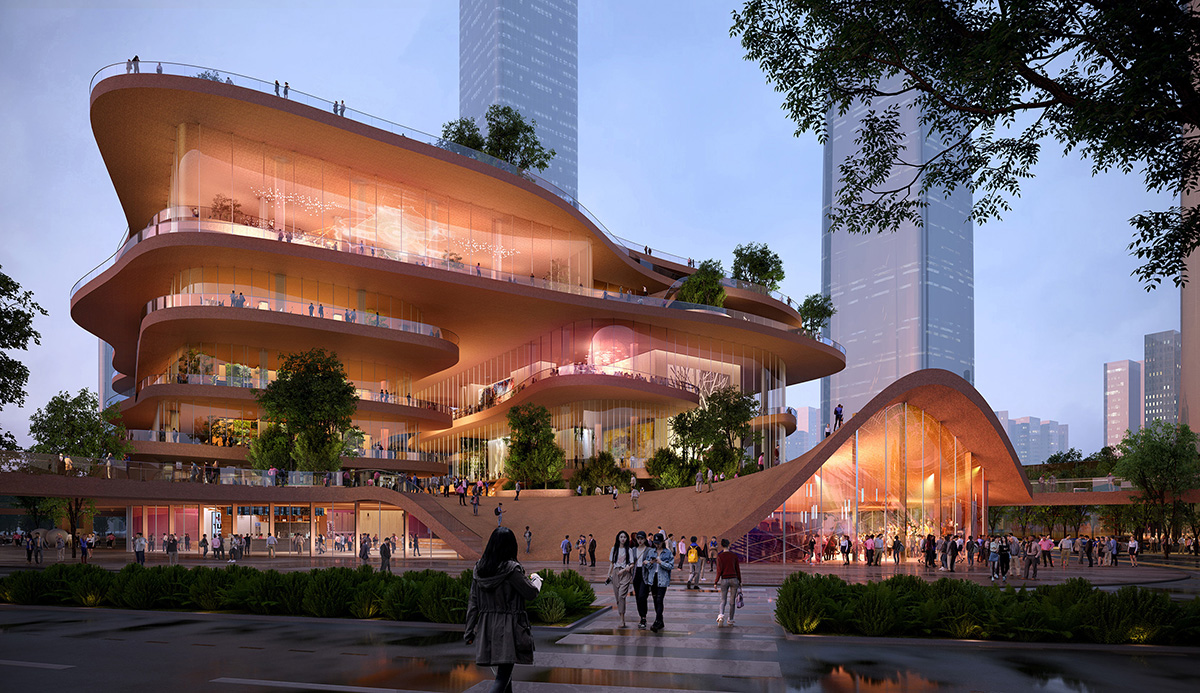
MVRDV's Shenzhen Terraces, featuring undulating and accessible floor plates, has begun construction in Shenzhen’s Longgang District, China.
Named Shenzhen Terraces, the new mixed-use project will form the core of the thriving university neighbourhood in Shenzhen’s Longgang District.
Offering a tropical climate, the project comprises a stack of accessible plates containing the buildings’ programme, where all communication takes place on the shaded terraces to maximise public life.
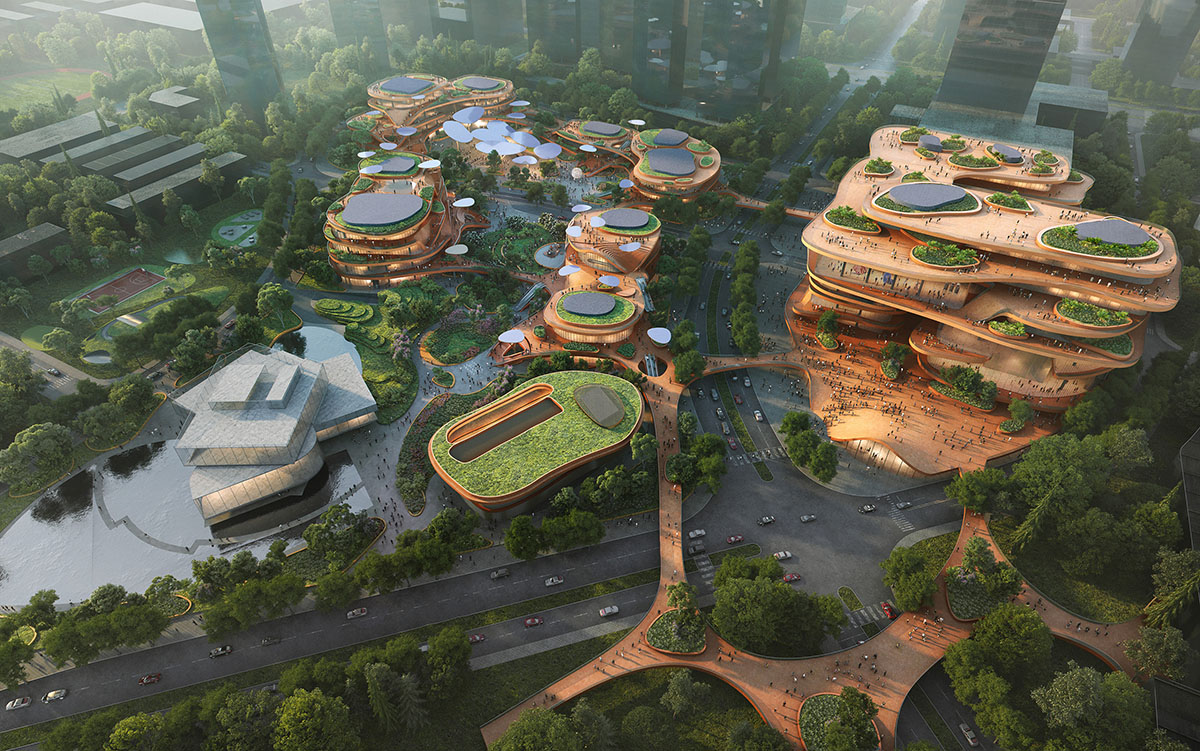
Green outdoor spaces mixed with a wide variety of activities make Shenzhen Terraces a hub for meeting, learning, leisure, culture, and relaxation
Focusing on sustainability in all levels, the project’s green outdoor spaces are combined together with a wide variety of activities – including a theatre, a library, a museum, a conference centre, and retail – to make the site a hub for meeting, learning, leisure, culture, and relaxation.
The design scheme is made of stacked horizontal terraces that provide a valuable contrast to the high-rise towers all around, but they are designed to also perform an ecological function: overhangs provide shade and the round shape promotes wind flow and natural ventilation.
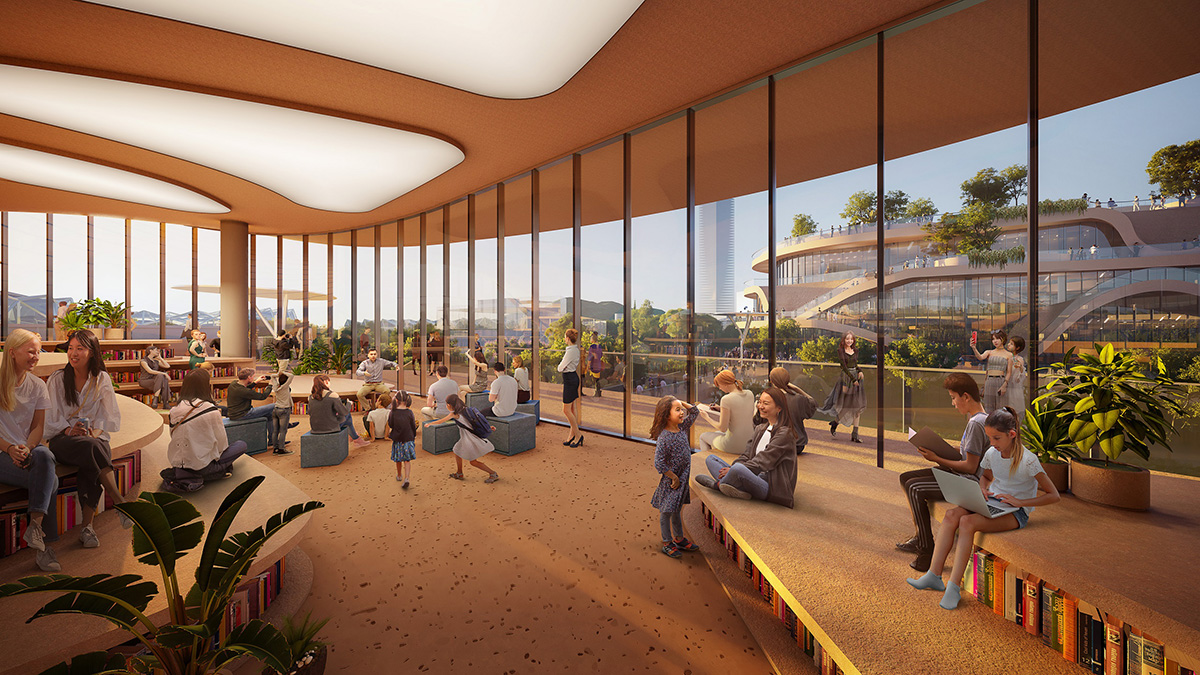
A new library concept defines the western buildings, acting as the glue connecting related educational programmes
In the project, MVRDV also creates the abundance of greenery, pedestrian paths, and water features make the project one of the more sustainable in Shenzhen.
The complex combines a pedestrian-friendly landscape with no fewer than 20 different programmes including public transport, as MVRDV describes, "Shenzhen Terraces is poised to become a sustainable hub for the surrounding area."
"The abundant planting and water features reduce the local temperature and provide habitat for urban wildlife, while gardens and rainwater collection generate food and water resources," added MVRDV.
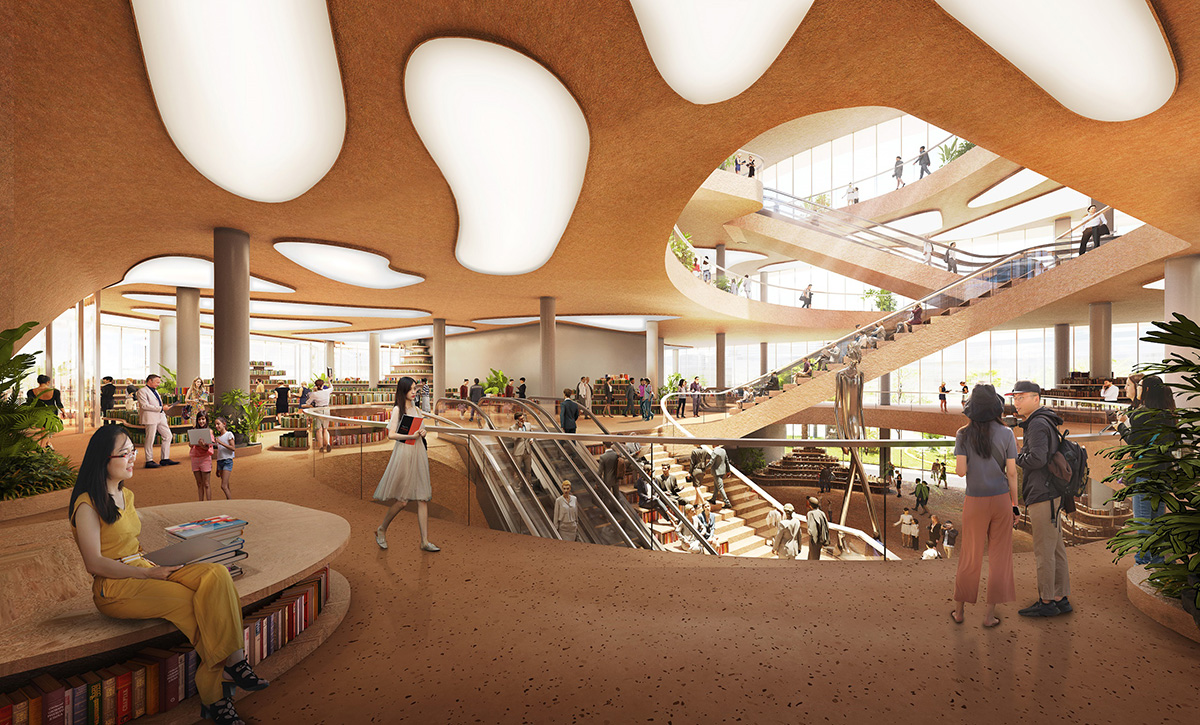
The edges of the terraces dip at strategic points to form connections between the various floors and to double as small outdoor auditoriums.
In other places, the facades are pushed inwards to emphasize entrances and create recognizable places within the scheme to help visitors orient themselves.

At the centre of the largest building, on the east of the site, the terraces curve inward to form an open-air atrium. In the buildings on the western side of the site, a new library concept defines the complex: rather than a separate entity, the library acts as the glue, divided over two buildings and connecting related educational and commercial programmes such as a Youth Activity Centre and a Youth Entrepreneurship Centre, with a “books park” outside.

Bridges connect the buildings to turn the second floor into a continuous route and connect Shenzhen Terraces with surrounding developments
MVRDV also creates bridges that connect the buildings to turn the second floor into a continuous route and connect Shenzhen Terraces with surrounding developments.
As the team highlights, "an important ambition for the project was to merge the building with the landscape and make the project as sustainable as possible."

The landscape design is developed in collaboration with Rotterdam and Milan-based firm Openfabric, and the landscape design adds patches of jungle-like greenery and public programming between pedestrian routes.
These patches host planting that imitates the sub-tropical natural forests of the region, mixed alongside features such as grassy hills, public art, reflective pools, and activity zones for climbing or table tennis.
The roofs are also part of this landscape, used not only for photovoltaic panels and rainwater collection but also large, accessible green lawns.

"In cities like Shenzhen, it is essential to think carefully about how public space and the natural landscape can be integrated into a dense city. Cool spaces, sheltered from the weather, create an escape from air-conditioned interiors," said MVRDV founding partner Winy Maas.
"Shenzhen Terraces can be seen as a three-dimensional park that makes it possible for students to walk outside to their lectures in the warm weather instead of being locked inside. In this project we are not working against the climate, but with the climate."
"The naturally ventilated terraces, protected from the sun by overhangs, will soon become fantastic hangout spots for people to meet and study," added Maas.
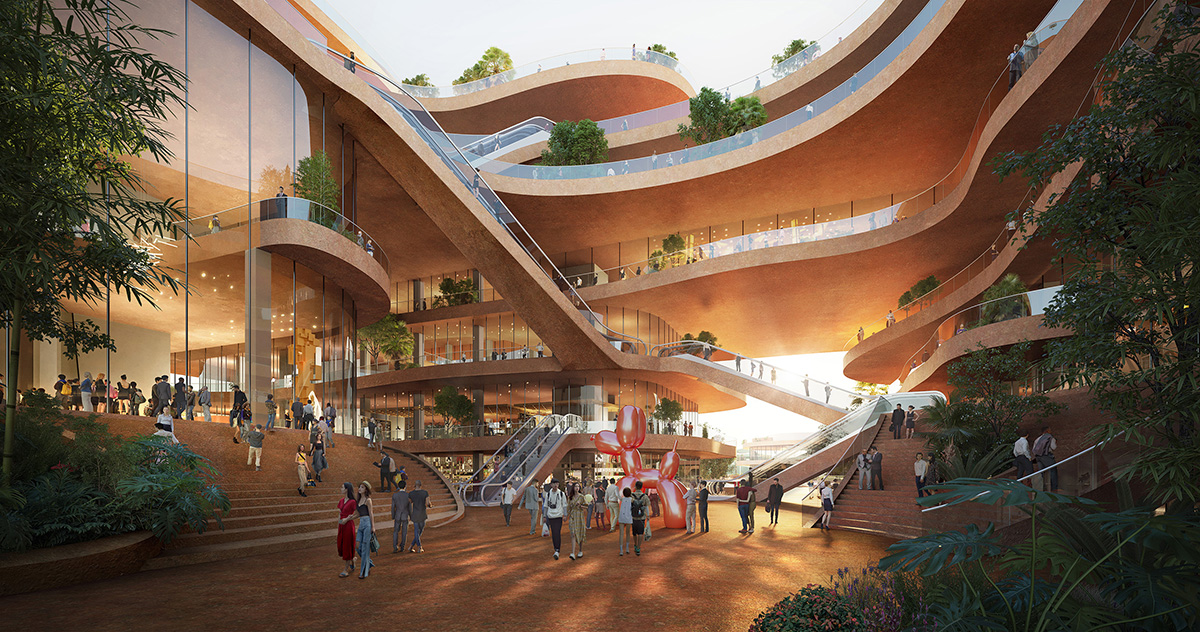
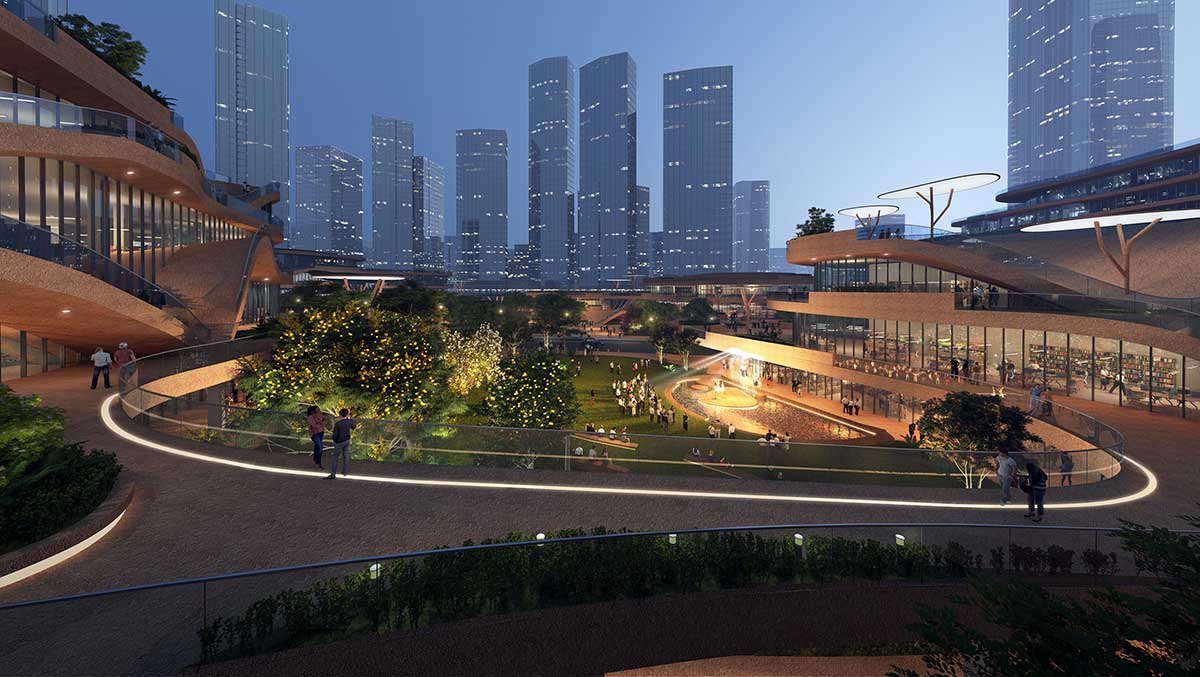
Image © lightstudio

Image © lightstudio

The landscaping, developed in collaboration with Openfabric, adds patches of jungle-like greenery and public programming between pedestrian routes. Image © lightstudio
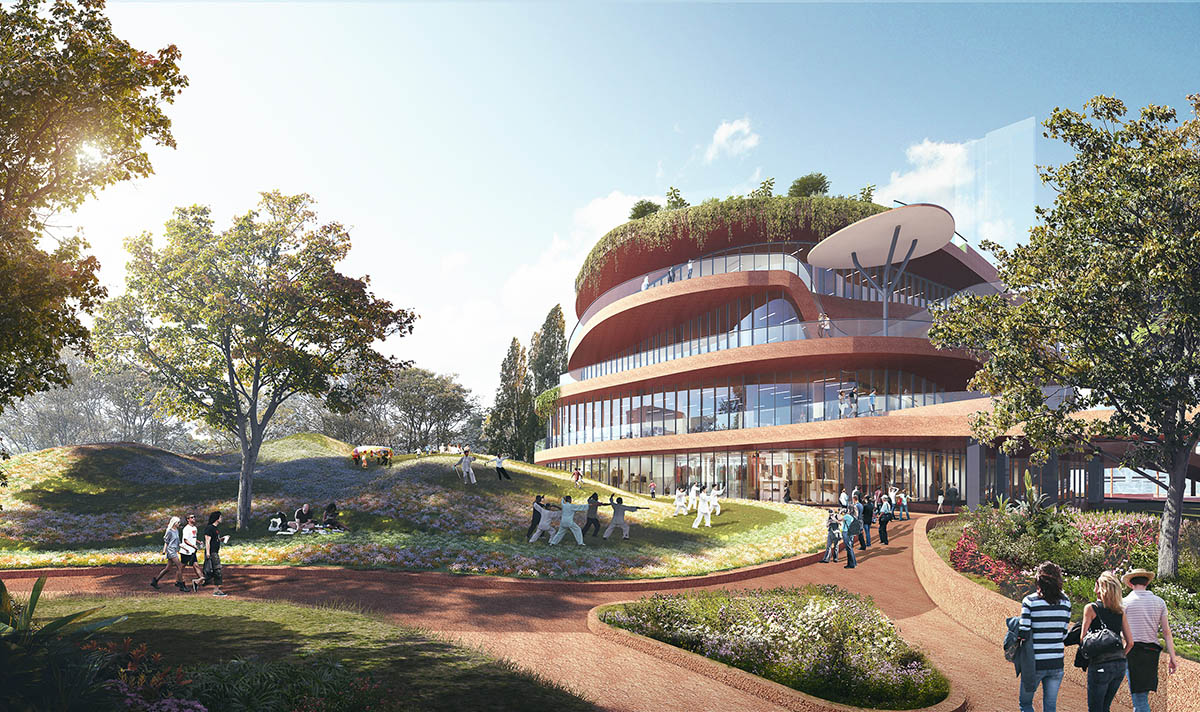
Image © lightstudio
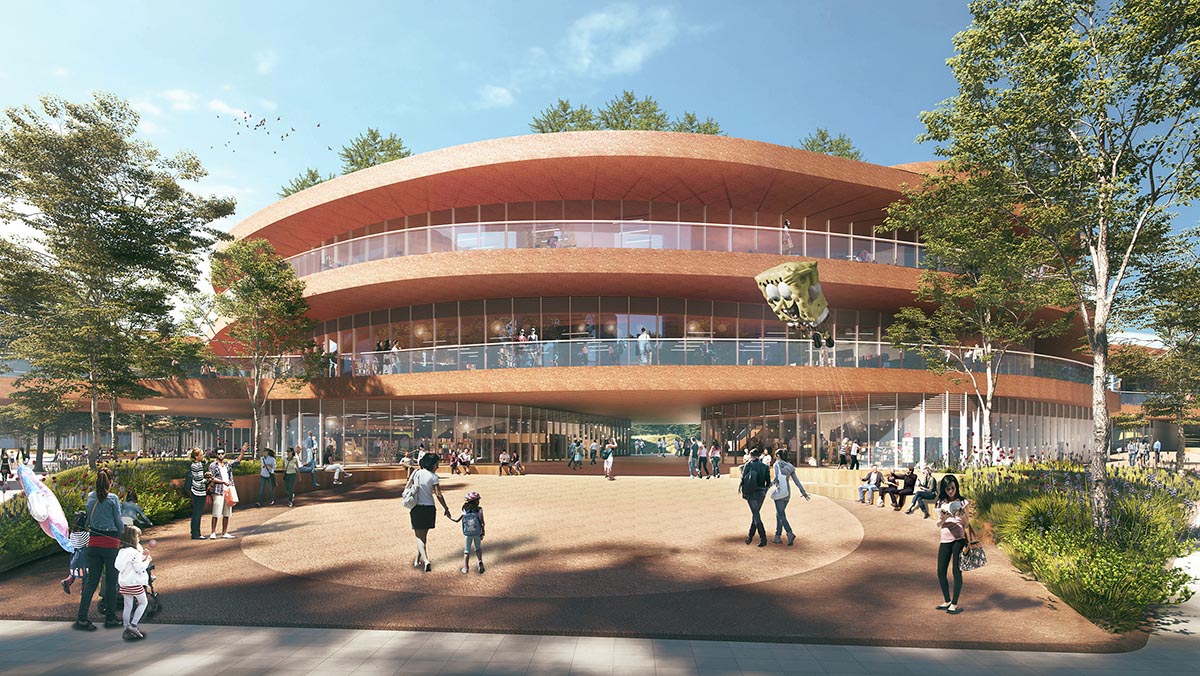
Image © lightstudio

Image © lightstudio
MVRDV was established in 1993 in Rotterdam, The Netherlands by Winy Maas, Jacob van Rijs and Nathalie de Vries.
MVRDV engages globally in providing solutions to contemporary architectural and urban issues. MVRDV has offices in Rotterdam, Shanghai and Paris.
Project facts
Project name: Shenzhen Terraces
Location: Shenzhen, China
Year: 2019
Client: Shenzhen Shimao Xin Li Cheng Industry Co.,Ltd.
Size and programme: 95,000 m2 mixed-use
Architect: MVRDV
Founding Partner in charge: Winy Maas
Director: Gideon Maasland
Associate Design Director: Gijs Rikken
Design Team: Sanne van Manen, Irgen Salianji, Shengjie Zhan, Luca Beltrame, Katarzyna Maria Ephraim, Cas Esbach, Hengwei Ji, DongMin Lee, Yannick Macken, Giuseppe Mazzaglia, Siyi Pan, Sen Yang, Jiani You, Daan Zandbergen
Copyright: MVRDV 2018 – (Winy Maas, Jacob van Rijs, Nathalie de Vries)
Partners
Landscape architect: Openfabric
Cost Calculation: Shanghai Xinyuan Construction Engineering Consulting Co., Ltd
All images © Atchain unless otherwise stated.
> via MVRDV
